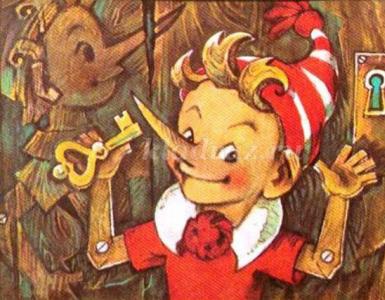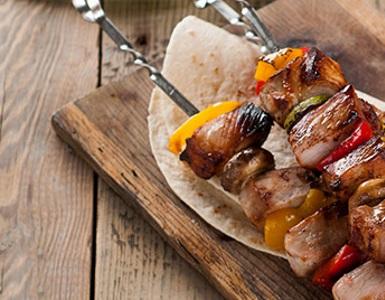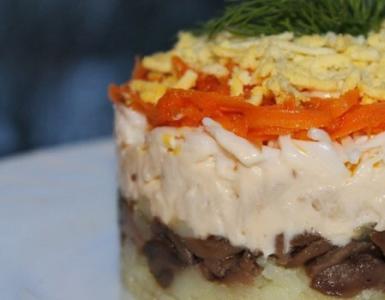Modeling in the middle group on the theme of winter. Modeling lesson for children of senior preschool age on the topic “The image of Mother Winter
- Continue to teach children to create expressive molded images in a constructive way, divide the material into required quantity parts of different sizes, sculpt sequentially, starting with large parts.
- Develop an eye for shape.
- Cultivate an interest in understanding the world around us, a desire to help others.
Preliminary work:
Making a snowman while walking, looking at illustrations of a snowman, reading poems about a snowman, asking riddles.
Material:
White plasticine;
Colored plasticine for a hat;
Modeling boards;
Toothpicks for snowman hands;
Illustrations depicting a snowman;
Progress of the lesson:
Educator: Guys, what time of year is it now?
Children: Winter.
Educator: Do you love winter?
Children: Yes.
Educator: Why do you love winter?
Children: In winter you can go sledding and ice skating.
Educator: Winter is a wonderful time of year. You can travel in winter. Would you like to go to a winter meadow?
Children: Yes.
Educator: Then let's go.
We're going to the clearing
The snow is falling quietly
(Children are walking)
Snowflakes are spinning
White fluff
(Children are spinning)
Let's fly, let's go
(The children ran)
And we lay down under the tree,
Snowflakes sleep quietly
White fluff.
(Children squat and close their eyes)
But the wind blew here,
Our snowball is spinning
Snowflakes are spinning
White fluff.
(Children are spinning)
Educator: Here we are in a clearing. Look how beautiful the Christmas tree is. Who's hiding under the Christmas tree here? We need to solve the riddle.
I wasn't raised
Made from snow
I'm used to living in the cold
Who is this? (Snowman)
Educator: Guys, look at the snowman hiding under the Christmas tree. Let's say hello to him? The snowman wants to tell us something.
The snowman said that he was alone and bored. How can we help him?
(Children's answers).
Let's make a lot of friends for him?
(Children sit at tables)
Educator: What is a snowman made of?
Children: From lumps
Educator: Are the lumps the same size?
Children: One big, one smaller
Educator: What else does a snowman have?
Children: Hands.
Educator: What shape are your hands?
Children: Oval.
Educator: What's on the snowman's head?
Children: Cap.
Educator: Guys, the snowman has one big lump, another smaller one and arms.
Educator: What's left to create?
Children: Hands.
Educator: We will make hands from our toothpicks.
From small parts we will make eyes, mouth and nose.
Now let's warm our fingers.
Our fingers pressed tightly together
What's happened? Interesting!
Apparently they got cold,
We'll cover them with a blanket
Now we have quietly begun to work.
Documents for download:
Topic of the week: "Winter" Summary of GCD " Artistic creativity"modeling in middle group"Snowflake "
Goals: Continue learning to roll sausages and construct the intended object from them in the form of a bas-relief (the image protrudes above the background plane). Improve the ability to understand and analyze the content of a poem. Develop fine motor skills fingers, eye and imagination. Cultivate neatness.
Preliminary work:looking at paintings with winter landscapes, getting to know the properties of snow.
Handout.Circles made of blue cardboard with a diameter of approximately 12-15 cm according to the number of children, white plasticine, stacks, musical accompaniment “Winter-Winter”
Children sit on the carpet with the teacher. A “snowflake” flew into the group - a letter. Reading letters to children.
"Hello guys! I'm just a little girl - Snowflake. I was recently born. But I know that my mother is Mother Voditsa. We have big family. Mother has sons - Voditsa, my brothers - Fog, Rain, Ice and we have daughters - Dew and Snowflakes. All children have different characters: we all love different seasons (some spring and summer, some autumn, some winter). Now it’s winter outside, and we love winter - Snowflakes and my brother Ice. You saw my brother today. Ice came to visit you. But I lost my sisters! While we were descending from the sky, a strong Wind blew, all my sisters flew away! I'm very sad alone, please help me find my sisters! Your Snowflake.
Snowflake also left us a description of her sisters, let's listen!
The teacher reads to the children an excerpt from a poem by K. Balmont:
Light fluffy
Snowflake is white.
How clean
How brave!
Educator:
What snowflake is in the poem? (Bold, pure, white.)
How else can you describe a snowflake? (Cold, prickly, shiny, etc.)
Let's play a little with our Snowflake? (Let's)
Fizminutka
We are snowflakes, we are fluffs,
We don't mind spinning around.
We are ballerina snowflakes
We dance day and night.
Let's stand together in a circle -
It turns out to be a snowball.
Guys, we completely forgot that our Snowflake is in misfortune! Let's help, guys, find Snowflake's sisters? - (Yes)
Let us make these little sisters for our Snowflake (sample showing)
Go to your seats.
Children go to their workplaces. The melody “Zimushka-winter” is playing
Modeling:
Roll several balls of the same size and roll them into thin sausages. The teacher shows the children how to make a snowflake out of sausages intersecting in the center on round cardboard and decorate it with short sausages or in another way.
Lesson summary:
Guys, look how beautiful the Snowflake sisters we have turned out to be! Now our Snowflake won’t be so sad! All of you are great!
Creativity: Practice the ability to divide plasticine into parts, roll, smear parts, transfer characteristics bunny structure, proportions.
Cognition: Clarify that the hare is a wild animal. In winter, it changes its gray coat to white.
Communication: Develop speech, remember the words of the game “The white bunny washes itself.”
Socialization: Cultivate persistence in achieving goals. Expand children's knowledge about wild animals. Encourage personal creativity.
Health-saving: Physical exercise, outdoor game “The white bunny washes itself.”
Material: Paintings from the "Wild Animals" series, a bunny's hat for playing, a snowy clearing with a Christmas tree. Poem illustrated by A. Barto “It was in January.” Sample of a bunny toy, white plasticine, napkins, boards, water.
Progress of the lesson:
I. The teacher offers to name the animals that live in the forest, asks to guess the riddle:
Jump and jump through the forest,
One by one, one snowball at a time. (hare).
II. They examine a bunny toy, a picture of hares, the characteristic structural features of the animal, and show the children the sequence of modeling: softening the plasticine, dividing the plasticine into parts, how to sculpt (rolling, rolling, flattening, smearing).
III. Finger gymnastics:
A bunny with a scythe sits under a tall pine tree
Another bunny sits under another pine tree.
IV. Independent work. Teacher's help.
V. Create a forest clearing, play with crafts.
VI. Outdoor game "The white bunny washes itself."
The white bunny washes himself,
Apparently he's going to visit.
I washed my ear, wiped it dry,
I washed my tail and jumped in to visit.
VII. Summary of the lesson. Admire the bunnies in the clearing.
Valentina Zyuzya
Direct educational activities “Lepka”
Topic: “Winter trees”
Program content. Cultivate a love for nature.
To consolidate knowledge about the structure of a tree and the life of plants in winter. Develop skills in sculpting images from plasticine on a plate. Improve the skills of smearing plasticine on a plate to create a general background for the composition, smearing techniques, and fastening parts of the image.
Promote the development of fine motor skills of the hands and accuracy of movements. Develop Creative skills children.
Material. Hard cardboard plates measuring 6x8 cm (for each child); plasticine of various colors; stacks, boards, napkins.
Move. 1. Conversation.
What time of year is it now?
Do you think trees continue to grow in winter?
What conditions are necessary for plant growth?
Are all the conditions necessary for plant growth present in winter?
If trees don't grow in winter, doesn't that mean they've died?
What is proof that the trees did not die, but only fell asleep in the winter frosts?
2. Today I invite you to depict winter trees using plasticine. Think about what kind of tree you want to depict, what its trunk and branches look like, how you can show that the trees are winter.
First of all, you need to create a background for your composition. Choose a color for the background, carefully smear the plasticine so that there are no light spots left on the plate. Try to make the layer of plasticine as even as possible.
3. Independent work of children.
Remind about the most appropriate sequence of work (trunk, branches, other details - for example, berries, if the tree being sculpted is rowan, the need to attach the parts to the background using smearing.
4. Offer to decorate the image and sculpt snow lying on the branches; draw a snowdrift under a tree.
Bottom line. After finishing sculpting, place the children’s work in an exhibition and invite them to talk about their tree.
Anastasia Lineva
Goals: Continue learning how to roll sausages and design of which the intended object is in the form of a bas-relief (the image protrudes above the background plane). Improve the ability to understand and analyze content poems. Develop fine motor skills of fingers, eye and imagination. Cultivate neatness.
Preliminary work: looking at paintings with winter landscapes, getting to know the properties of snow.
Handout. Circles made of blue cardboard with a diameter of approximately 12-15 cm according to the number of children, white plasticine, stacks, music "Winter- winter»
Children sit on the carpet with the teacher. IN the group got knocked up« snowflake» - letter. Reading letters to children.
"Hello guys! I'm just a little girl - Snowflake. I was recently born. But I know that my mother is Mother Voditsa. We have a big family. Mother has sons - Voditsa, my brothers - Fog, Rain, Ice and we have daughters - Dew and Snowflakes. All children are different characters: we all love different seasons (some spring and summer, some autumn, some winter). Now on the street winter, and we love winter - Snowflakes and my brother Ice. You saw my brother today. Ice came to visit you. But I lost my sisters! While we were descending from the sky, a strong Wind blew, all my sisters flew away! I'm very sad alone, please help me find my sisters! Yours Snowflake.
More Snowflake She left us a description of her sisters, let's listen!
The teacher reads to the children an excerpt from poems by K. Balmont:
Light fluffy
Snowflake white.
How clean
How brave!
Educator:
Which snowflake in a poem? (Bold, pure, white.)
How else can you describe snowflake? (Cold, prickly, shiny, etc.)
Let's play a little with our Snowflake? (Let's)
Fizminutka
We snowflakes, we are fluff,
We don't mind spinning around.
We ballerina snowflakes,
We dance day and night.
Let's stand together in a circle -
It turns out snowball.
Guys, but we completely forgot that our Snowflakes misfortune! Let's help, guys, find the sisters, Snowflake? - (Yes)
Let us make these little sisters for our Snowflakes(sample showing)
Go to your seats.
Children go to their workplaces. The melody is playing "Winter- winter»
Modeling:
Roll several balls of the same size and roll them into thin sausages. The teacher shows the children how to make sausages intersecting in the center on a round piece of cardboard. snowflake and decorate it with short sausages or in another way.
Lesson summary:
Guys, look how beautiful the sisters are! We got snowflakes! Now our Snowflake it won't be so sad! All of you are great!















